We use cookies to ensure you get the best browsing experience. By continued use, you agree to our privacy policy and accept our use of such cookies. For further information, click FIND OUT MORE.
Over the past several months, the PCIJ Story Project has been working with a team of researchers and artists on a story on the drug war's impact on the poor. The focus of the research is the government's conditional cash transfer program, its biggest weapon in the war against poverty. Known as the 4Ps program, it provides cash assistance to the poorest 20 percent of Filipino families. The researchers found that one in five drug casualties in Metro Manila came from a 4Ps family.
The researchers worked with a street artist collective called Gerilya to paint murals depicting the stories of the families in this report. The murals were painted on walls, basketball courts and other places around Metro Manila with the help of urban poor residents. Here are some of their stories.
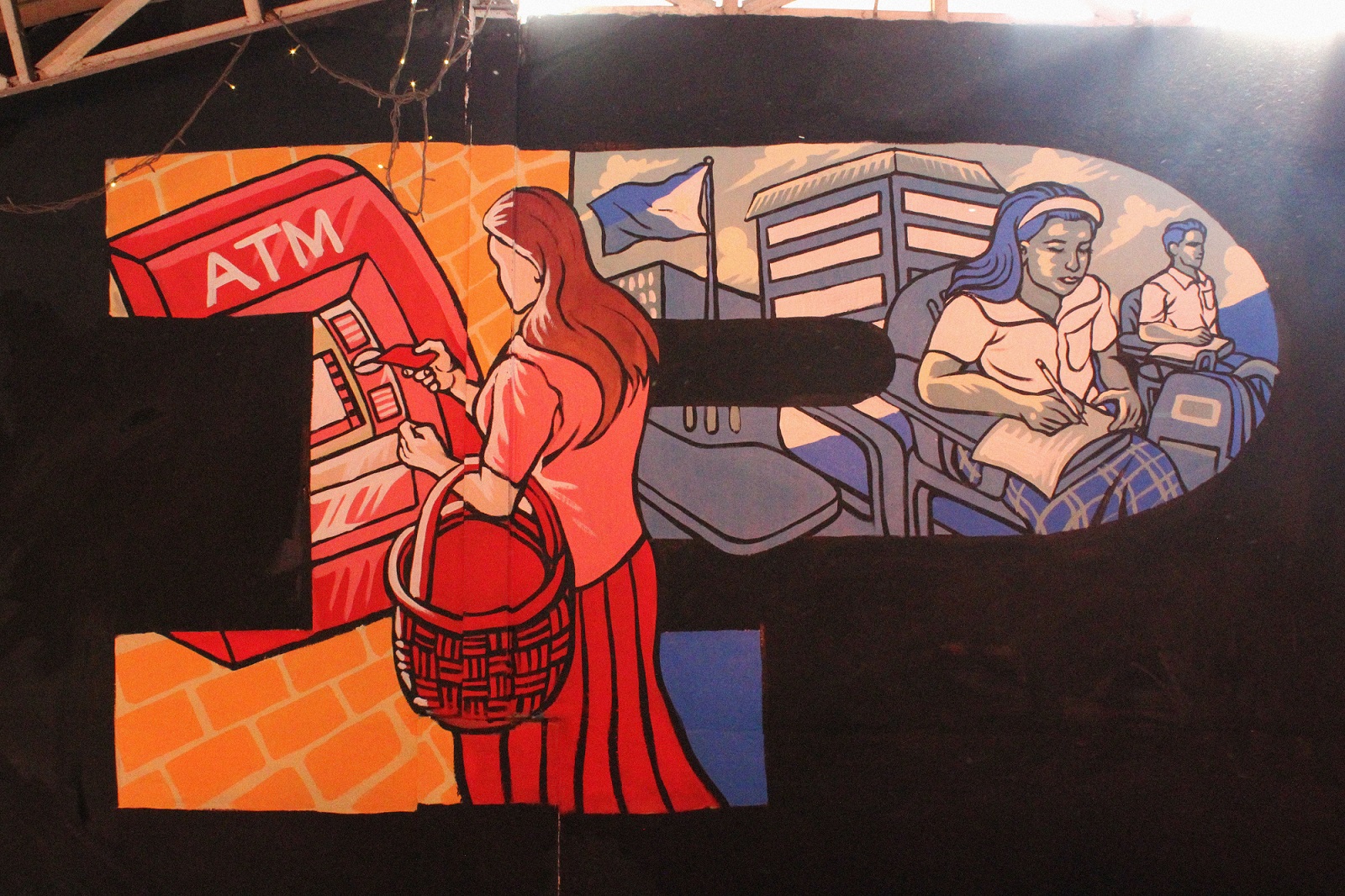
For the past six years, Irene, a domestic helper and mother of five who lives in a shantytown in Marikina, has been getting P1,500 a month from the government’s poverty reduction program known as 4Ps, short for the Pantawid Pamilyang Pilipino Program.
Now in her mid-40s, Irene uses that money, a form of conditional cash transfer, to pay for the schooling, transport, and school supplies of her two children in high school because she and her husband, Gerry, a mason, barely made enough to keep the family housed and fed. (Irene and Gerry’s real names are not used in this story in order to protect the family’s safety).
Since its pilot in 2007, the 4Ps program, available to the poorest 20 percent of Filipinos, has covered some 4.4 million households with the intent of keeping their children healthy and in school. In the past decade, the government, with the help of foreign donors like the World Bank and the Asian Development Bank, has invested nearly P560 billion into the program. To date, some 12 million children have been able to go to school thanks to 4Ps. In 2015, the World Bank said it was one of the best targeted social safety net programs in the world.
Gerry and Irene had high hopes that 4Ps would allow their children to have better lives. Irene did her best to meet the conditions for staying in the program, such as making sure the children did not miss school.
But on the evening of February 7, 2017, Gerry, who struggled for years to overcome his shabu habit, was killed by unknown assailants while he was eating at a neighborhood goto stall in Marikina City.
What happens when a government program to alleviate poverty collides with another government program to eliminate the drug trade? The travails of Gerry’s family show the fear, insecurity, and displacement faced by those who find themselves at the crossroads of two government initiatives.
For the past two years, we have been doing field and database research on 4Ps and the drug war. Our research shows that at least one in five victims of drug-related killings in Metro Manila in 2016 and 2017 were 4Ps beneficiaries.
We spent 18 months collecting the names and addresses of nearly 2,000 drug war casualties in the capital. We then showed our data to researchers at the Department of Social Welfare and Development (DSWD) National Capital Region office and asked them to match the names we collected with those of families who are in the department’s 4Ps database. The DSWD administers the 4Ps program.
To make sure the matches were correct, we validated them by visiting the homes of the victims’ families in four cities in Metro Manila and requesting families to show us their 4Ps household IDs.
We found that at least 333 out of 1,893 casualties that we had information on were 4Ps beneficiaries. We also found 12 cases where there were multiple drug war victims within the same family.
This casualty list is incomplete. The police say they have killed an estimated 5,500 drug suspects in police operations since July 2016. As of March 2019, nearly 30,000 homicides are under investigation, a good number of which are drug related.
Gerry’s was one of them.
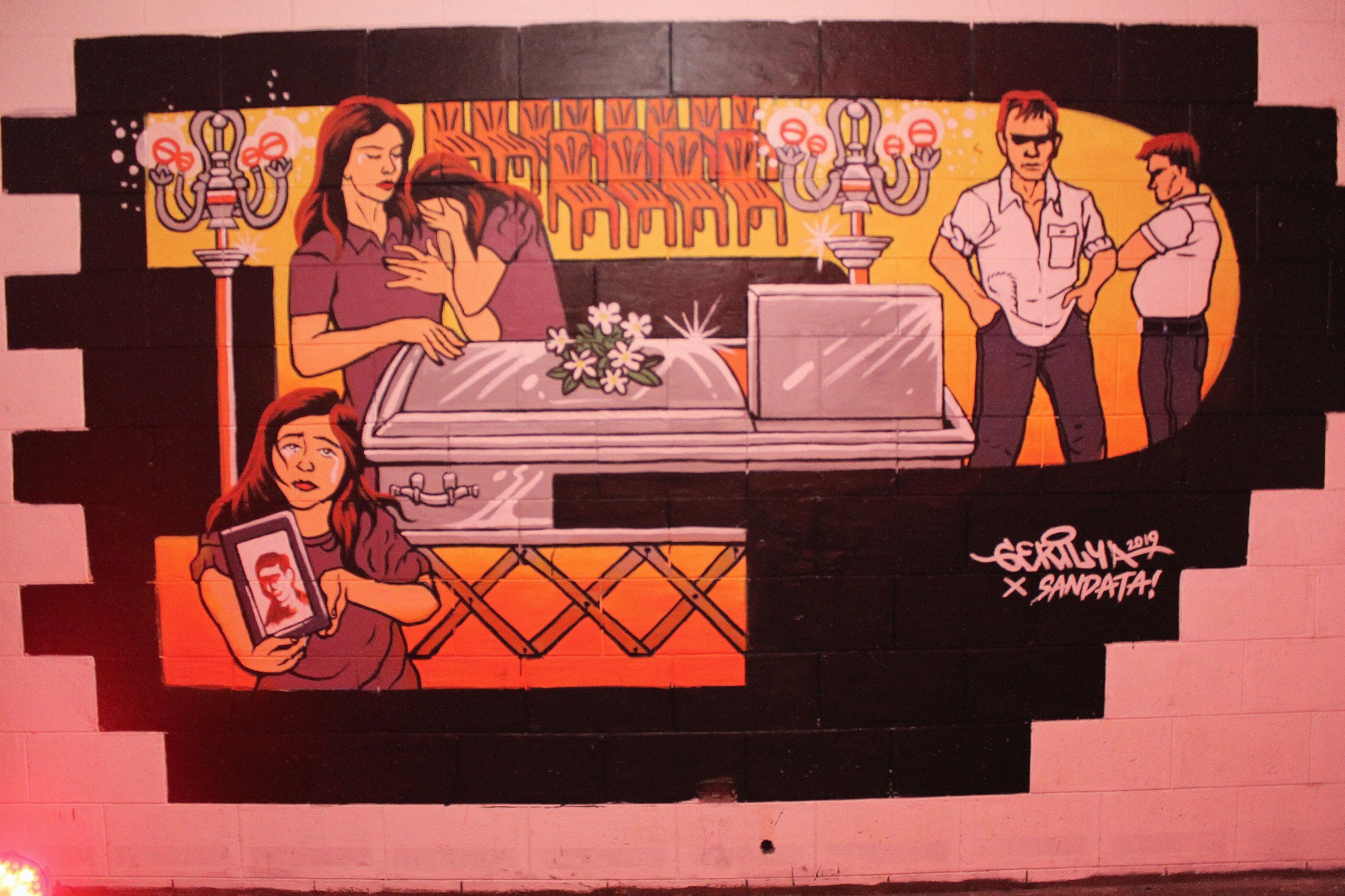
Irene didn’t approve of Gerry’s shabu habit. The family had enough problems without his drug-user friends hanging around their shanty. One day, Irene finally put her foot down. Keep your shabu friends away or I will take the children and we will leave you, she said.
Four years ago, the couple separated. With her two teenage daughters, Irene moved to a house a few streets away. Still she and Gerry often checked on each other and Gerry continued to provide for his family.
Gerry’s addiction was known to the neighbors and he feared being swept up in President Duterte’s anti-drug campaign, so he surrendered to the barangay during the first wave of Oplan Tokhang in late 2016. Irene regrets the surrender. She suspects it put him on the radar of police and barangay officials, who were already closely monitoring the family’s progress as part of the 4P’s program.
The barangay implements the 4Ps program. Its officials help select and monitor grantees, whose names, addresses, and family histories are recorded so the government can track their progress and check whether they meet the conditions for receiving aid. If children drop out of school, for example, families lose the monthly allowance they get for each child.
Over the years, these officials have gotten to know the 4Ps grantees well. They know who are using or peddling shabu. When the Duterte administration implemented the drug campaign two years ago, the same barangay officials also became responsible for compiling drug watchlists that were often shared with the police.
At Gerry’s wake, plainclothes policemen circled the area. Neighbors and friends who were there recognized the men and the guns bulging beneath their shirts. That spooked the visitors, and soon everyone kept away, afraid to be associated with Gerry and his family.
At the wake, barangay tanod and police investigators questioned Irene about Gerry’s drug use. “Ano’ng isasagot ko (How should I answer)?,” she said, “Bakit pa? Hindi nila maibabalik yung asawa ko (What’s the point? My husband is dead and nothing will bring him back.)”
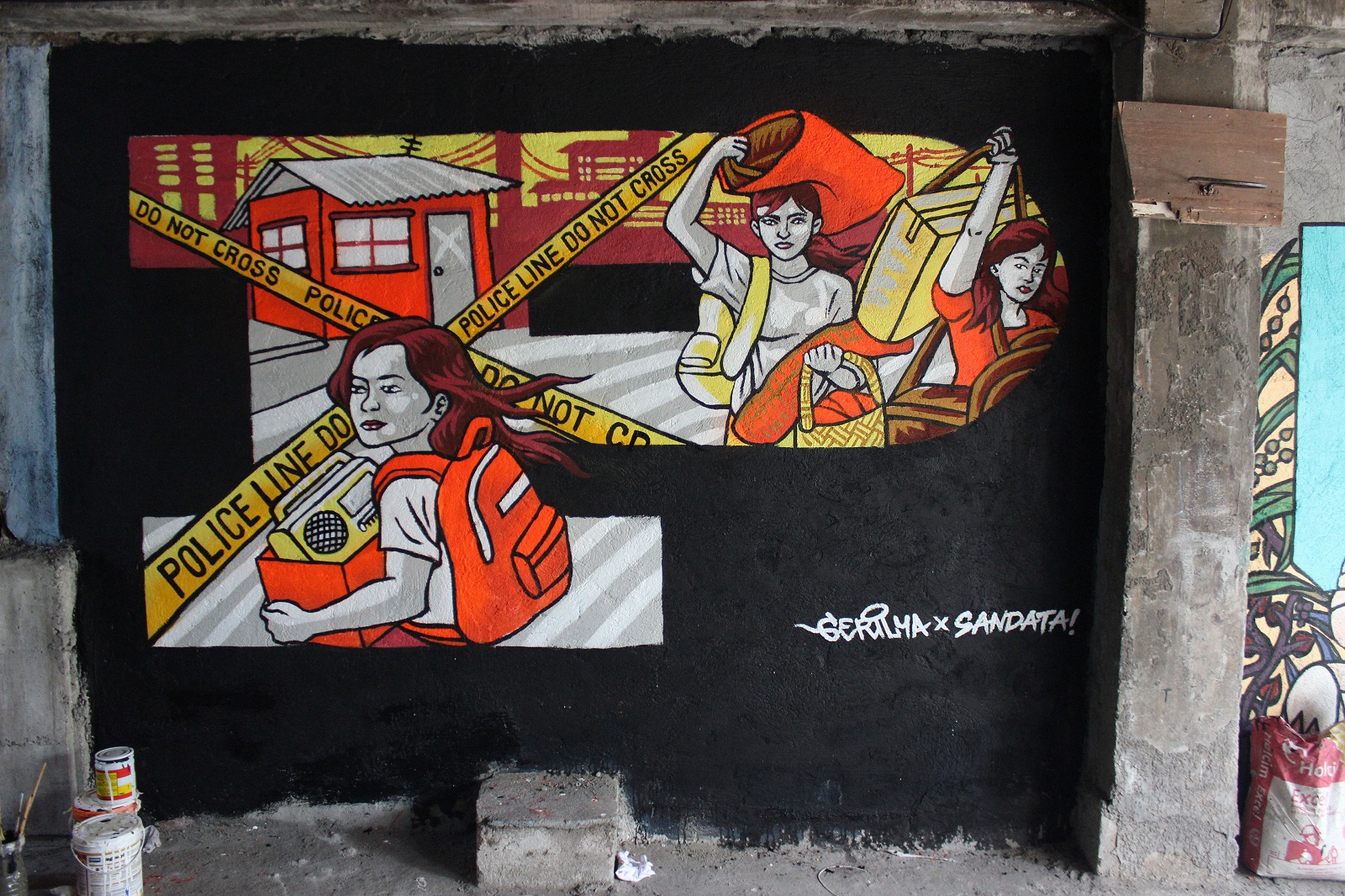
After Gerry’s death, Irene was forced to abandon her home. The police had tagged it a drug den, and she was afraid her family would be a target. She moved again, farther away. She was scared, she said, because it was not uncommon for police or bonnet-wearing assassins to return to the scene of a drug killing and target people they suspect to be associated with the dead.
Irene has many regrets. When Gerry surrendered, she wanted to send him to a rehabilitation program, but a barangay official advised against it. “Bakit mo ipapa-rehab kung kaya naman sa bahay? Magkakasamaan lang kayo ng loob. (Why don’t you just do the rehab at home? He will be mad at you if you have him committed to a rehab center.)”
So Gerry was left to his own devices to beat his addiction. He was making progress, but it was slow. “Matagal yan na proseso, lalo na kung mag-isa (It takes a long time if you do it by yourself),” Irene says.
But why did they kill him, she asks? Gerry was not a drug peddler. He had already surrendered. He was getting better. Did her neighbors rat him out? Were the barangay tanod and neighborhood policemen involved?
There is an overlap between tokhang victims and 4Ps beneficiaries, says Irene. Was the anti-poverty program’s information also being used to target drug suspects?
Each month for the past four years, Irene says, she has been meeting with other 4Ps recipients in the barangay hall. The 4Ps program uses these monthly meetings to strengthen involvement in the antipoverty program.
But when the drug war happened, the community was divided. Shabu users were ostracized, their children bullied. Many neighbors avoided being associated with those targeted by the police for fear they would be caught in the police’s dragnet as well.
Today, Irene is wary when she speaks with neighbors and friends. She no longer knows whom to trust.
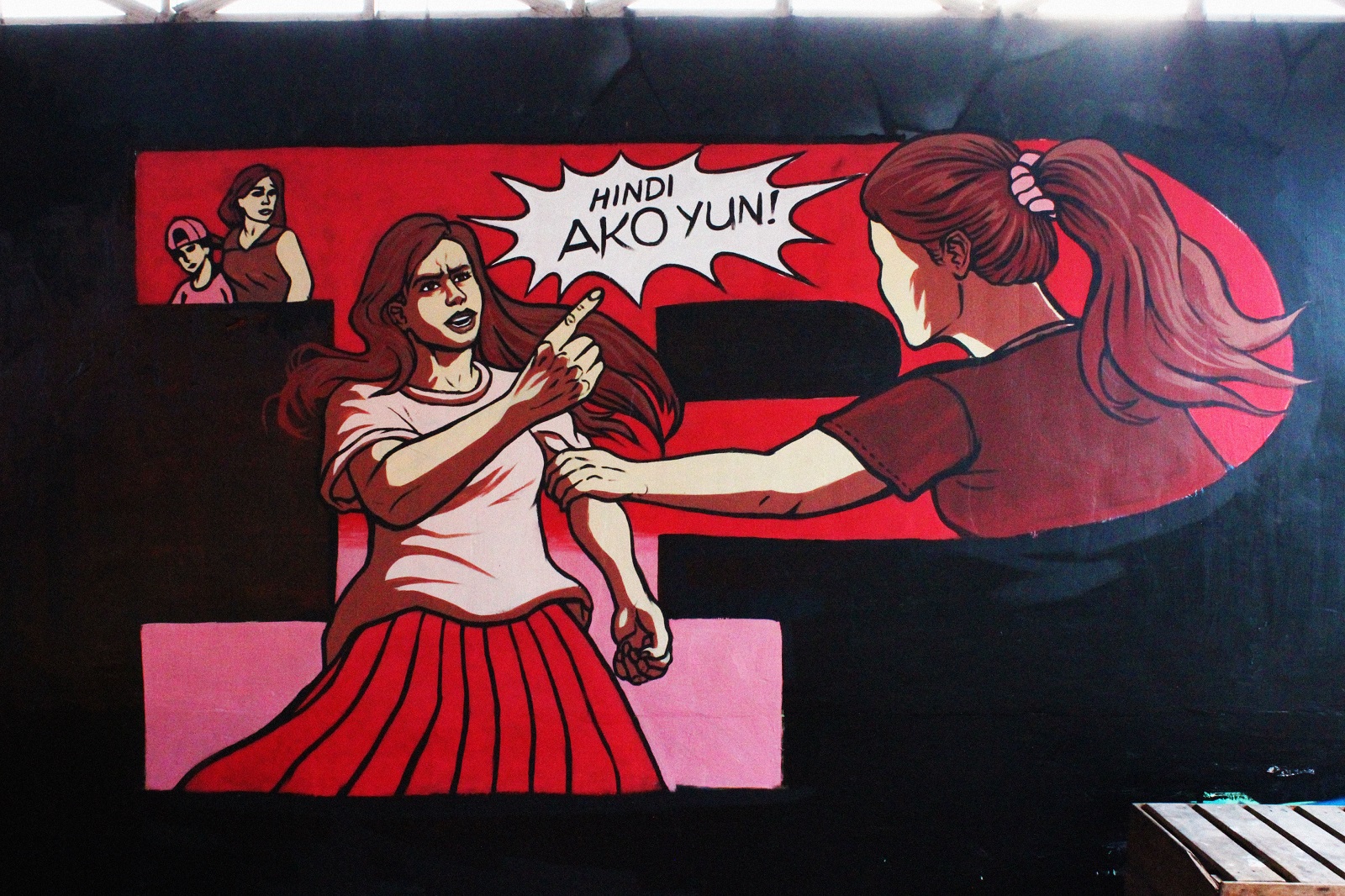
Even when Gerry was alive and he was the family’s breadwinner, money was always tight. The money from 4Ps barely covered the children’s school and food costs.
After Gerry’s death, Irene was left alone to fend for two daughters aged 15 and 18 who are still studying while her older children have families of their own. Irene works odd jobs like babysitting her neighbor’s children, doing laundry, or watching over a store in the nearby wet market.
Irene’s daughters refused to go to school after schoolmates bullied them. Their father, their classmates said, was a shabu addict. Irene was quick to defend Gerry. “Maraming ganyan dito, pero hindi perwisyo ang papa n’yo. Hindi siya nagnanakaw, hindi nanghihingi ng pera. (There are many addicts here but your papa was not like them, he never caused anyone any trouble. He never asked anyone for money.)”
Instead of school, Irene enrolled her children in twice-a-week classes in the Alternative Learning System (ALS) but it would take time before their records in the 4Ps can be updated and they can be monitored for education compliance. But because they dropped out, they can no longer receive 4Ps grants for education until their attendance to ALS is monitored by the 4Ps program.
Instead, Irene’s family receives P500 from the Family Development Program, P200 from the post-TRAIN Law Unconditional Cash Transfer, and P600 in rice subsidy per month. Irene wishes her children can return to a regular high school and not just because they can use the extra money. She worries they are not getting sufficient instruction, and without school friends, they would be missing the best years of their lives.
These days, Irene lives in fear. Once, a barangay councilor called out to her from across the street. “Linda!” she shouted.
Irene was frantic. She shouted and cursed, “That’s not me.” Linda is Gerry’s sister, who is of a similar height and build. Linda was a drug user who had since gone into hiding. Irene is afraid she would be mistaken for her sister-in-law. “You never know who’s listening,” she says. She is nervous when she is with neighbors, suspicious of the people she passes on the street. For Irene and others like her, the trauma from the loss of their loved ones linger long after their deaths.
Two years after Gerry was gunned down, Irene fears she will be killed in error. Who will care for her daughters when she is gone?
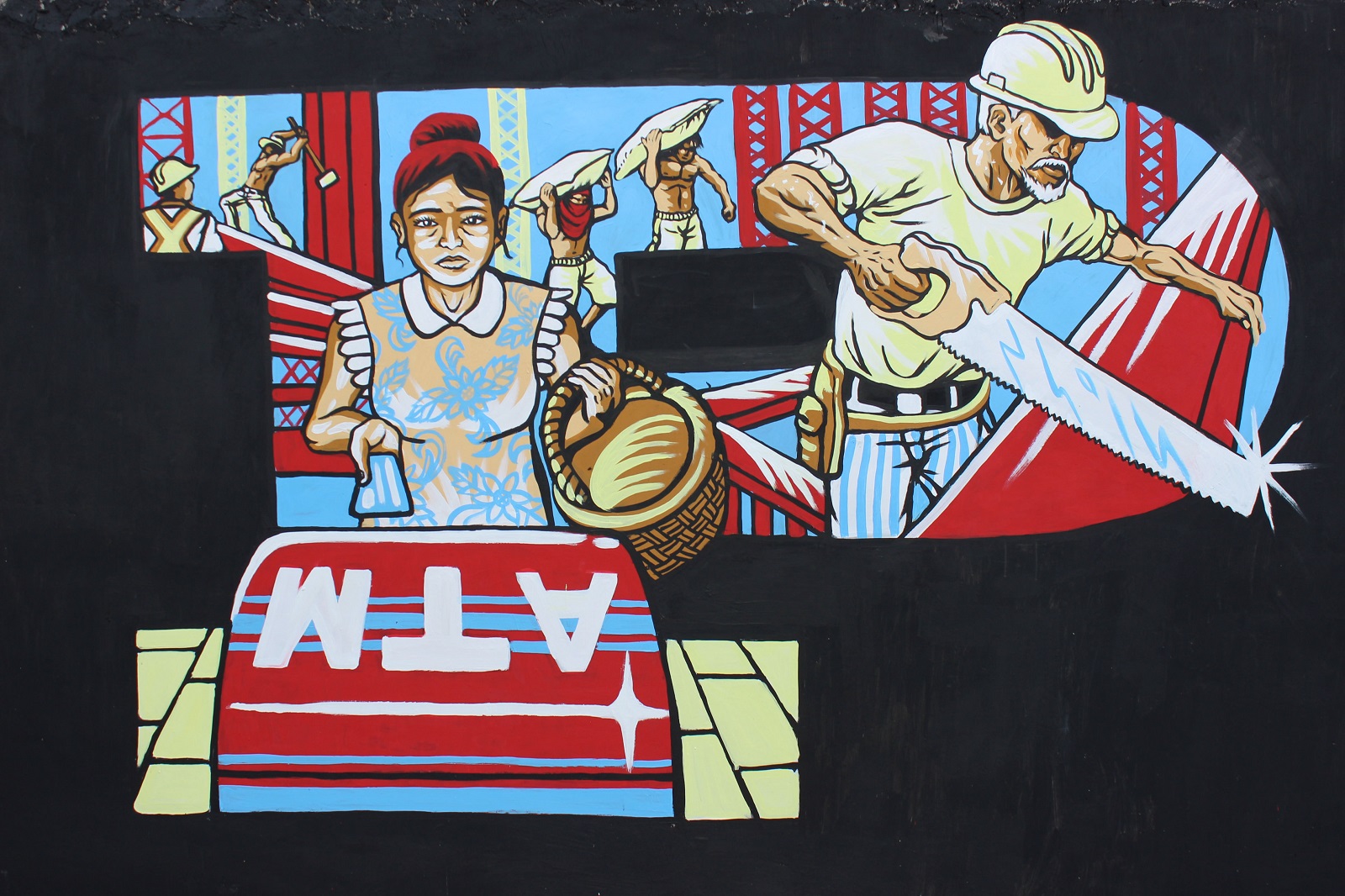
Three years ago, Lourdes, a 58-year-old-grandmother in Mandaluyong, became the sole caregiver and provider for three grandchildren after her son, “Kulit,” 34, was killed by gunmen wearing bonnets and helmets.
Kulit had been in trouble with the law before. He had spent nearly 15 years in jail for a homicide his mother said he didn’t commit but took the fall for. After his release, he could barely make ends meet from the money he made from repairing electronics and so he went into the drug trade, his mother said.
Lourdes is one of many grandmothers who have been forced to care for the families of their sons who perished in the war on drugs. She did not want her real name published for fear of her grandchildren’s safety
Our research on nearly 2,000 drug war casualties shows that the typical victim is male, aged 30-35 years old, and the family’s main breadwinner. With their deaths, the burden of providing for their families falls on widows and, more often than not, the paternal grandmothers.
Our research focused on families that have been getting cash assistance as part of the government’s centerpiece antipoverty program known as 4Ps, available to the poorest 20% of Filipinos. We found that many drug-war families are in danger of dropping out of 4Ps if they are unable to meet the requirements of keeping school-age children in school.
Lourdes has accepted that she will have to provide for her orphaned grandchildren, but like many grandparents forced to deal with the consequences of their sons’ deaths, she was not prepared to take on this additional burden. While he was in jail, Kulit had provided for his children from the money he made selling food to the other prisoners. Without Kulit, Lourdes’s 60-year-old husband, a mason, is now the only wage-earner in their extended family. Three other jobless children already live with Lourdes as do seven other grandchildren.
Lourdes’s family is among the 4.4 million Filipino families who get assistance from the 4Ps conditional cash transfer program. Like similar programs in Brazil and Mexico, this money is intended to make sure poor children are fed, cared for, and stay in school.
To receive the full amount of the cash grant – P300 monthly for elementary and P500 for each high school student – children must attend 85% of their classes. Some 12 million children are in school today thanks to 4Ps. Many of them will be the first in their families to complete secondary education and as a result have better chances of finding employment or getting a college education.
President Duterte supports the 4Ps program. In 2017, staying true to his campaign promise, he provided each 4Ps family an additional P600 as rice subsidy. In addition, in 2018, the government increased cash transfers for each 4Ps family by P200 in order to mitigate the impact of higher prices brought about by the Tax Reform for Acceleration and Inclusion (TRAIN) law.
Despite these increases, the benefits provided by 4Ps to poor families that have fallen victim to the war on drugs have been outweighed by fear, insecurity, and the loss of their breadwinners.
Even before the drug war, these families lived in communities that were already vulnerable to multiple economic shocks such as illnesses, flooding, fires, and demolitions. The death of their loved ones becomes one more blow that lessens their odds of escaping from an intergenerational cycle of poverty.

No one came to Kulit’s wake, even if in life, Kulit was well-liked. He was no saint, but he looked out for his friends and family. He was ready to help friends in dire straits when he had money. When the drug war began, Kulit surrendered to the police headquarters in Camp Crame and admitted he was a drug user. He was pushed into the drug trade, his mother said, because the family house had been gutted by a fire and needed to be rebuilt. He also wanted to raise money so Lourdes could get an operation to remove her cataracts.
Lourdes recalled that just weeks before he died, Kulit pointed to the concrete houses on their street. “Iisa lang ang dahilan kung bakit nabuo mga bahay nila (There’s only one reason why all those houses have been built),” he said.
It was an open secret in their community: Drugs are an easy way to make money. By risking possible death to be part of the illegal trade, Kulit hoped to better his and his family’s life. “Wala tayong tutulugan kung hindi ako kikilos (We will have no home to sleep in if I don’t do this),” he told Lourdes. It was dangerous, but the alternative was to continue toiling with no hope of a better life. Grudgingly, Lourdes gave her blessing.
With just P500 capital, Kulit soon earned several thousand pesos more. He gave the money to Lourdes and told her to buy cement to begin construction on their house. A week later, Kulit slept at a friend’s home and woke up early to eat breakfast at a nearby goto stall. His friend had been restless the whole night, checking if Kulit was really asleep. Not long after Kulit left to get breakfast, he was shot and killed by unknown gunmen at the goto stall. His neighbors and family believe the friend had tipped him off to the authorities.
Lourdes was just streets away when a kumare told her that her son had been gunned down. She hurried to where he was, and even crossed paths with the friend whom they suspected of informing on Kulit. By the time Lourdes arrived at the crime scene, her son’s body was already being taken away by Scene of the Crime Operatives.
Lourdes still remembers being told by the Scene of the Crime Operatives that she needed to pay P45,000 so she can bury her son. “Binaril n’yo na nga, kailangan ko pang tubusin? 'Di po kayo nahiya? (You killed him and now I have to beg for money so I can claim his body? Have you no shame)?”
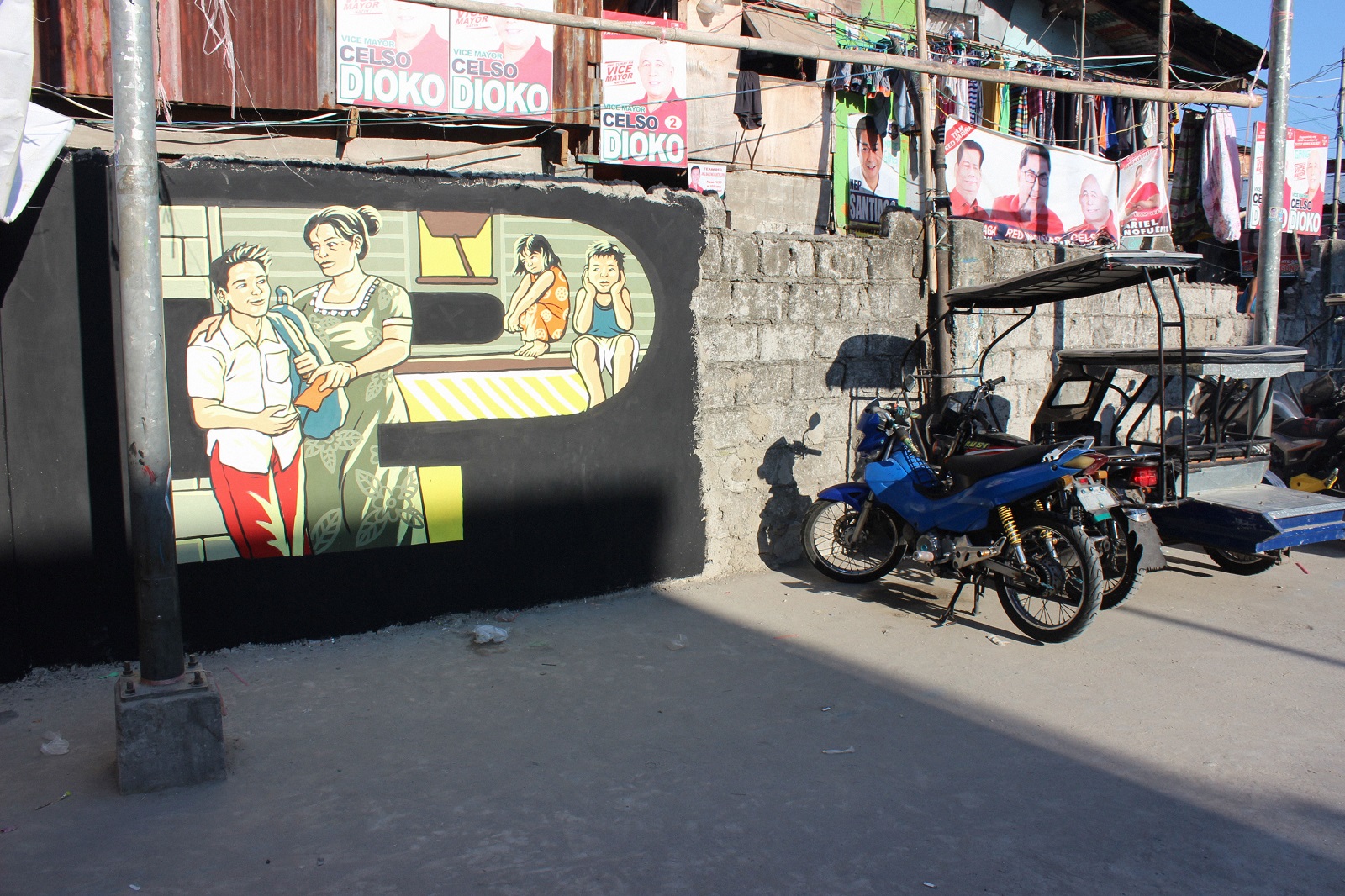
After Kulit’s death, Lourdes took care of his three boys, aged 18, 15, and 16, adding to the other grandchildren who were already living with her. With 10 grandchildren under her roof, buying enough food or medicine is a constant challenge. The only wage earner in their household is her husband, who earns P500 a day when there is work available. When her husband has no work, Lourdes relies on what she can still get from the 4Ps.
Even with money from 4Ps, Lourdes cannot afford to send all three of Kulit’s children to school. While 4Ps covers most educational needs, it is not enough to pay for transportation, food, school supplies, uniforms, and other expenses.
So Lourdes had to make a choice. Kulit’s two youngest children would drop out, even if that meant not being able to claim more money from 4Ps. No matter how she added up the numbers, there was simply no way to send everyone to school, even with 4Ps aid.
Instead, Lourdes decided to invest the family’s remaining resources in Eugene, Kulit’s eldest. At 18 years old, he is in Grade 8, four years shy of a high school degree. She hopes he would finish his schooling, find a good job, and help lighten the family’s load. Depending on whether Eugene is meeting the conditionalities of school attendance and if Lourdes meets the conditionalities of the health grants, the family receives between P1,300 to P1,800 per month. They get P500 for a child attending high school, P500 more in health grants if Lourdes attends the Family Development Sessions, a P600-rice subsidy, and P200 in an unconditional cash transfer.
The 4Ps health grants require that mothers attend the Family Development Sessions (FDS) where they cover topics such as financial literacy and responsible parenthood. Families with infants and children younger than two years old are required to attend monthly check ups and be up to date with immunizations. The FDS is means to monitor the progress of 4Ps recipients while also fostering friendship and a sense of community.
While accepting her new role as her grandchildren’s primary caregiver, Lourdes can barely make ends meet. “Ang lalakas pa naman kumain ng mga ‘yon. Tatlong lalaki kasi. Dalawang kilo [ng bigas], kulang sa’min sa isang saingan. Minsan nga sinasabi ko, dahan-dahan naman kayo kumain! Wala na tayong pambili ng bigas! (My grandchildren eat a lot because they’re growing boys. Two kilos of rice per meal is not enough. Sometimes I tell them not to eat too much! We can’t afford to buy more rice!)”
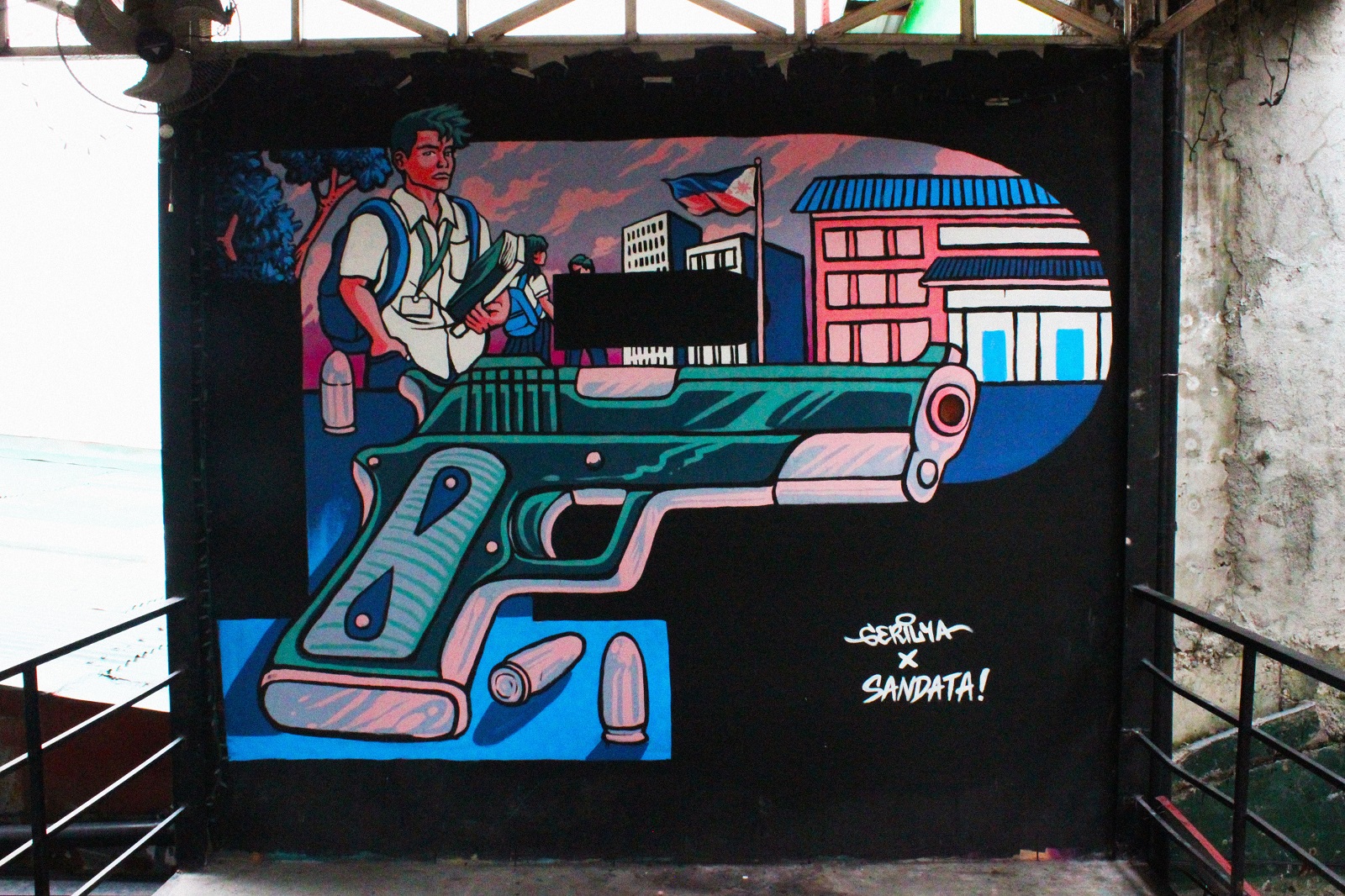
Eugene used to dream of becoming a policeman.
But after his father was killed, Eugene lost faith in the police and the justice system. He is angry about what was done to Kulit but feels powerless to do anything.
As the eldest and closest to graduation, the family’s survival rests on Eugene’s shoulders. The teenager juggles his family’s hopes and his schooling with a constant fear that what happened to Kulit can happen to any of them. Instead of focusing on his studies, Eugene is constantly preoccupied with trying to keep his family safe.
Lourdes describes a recent exchange with her grandson: “Eh 'yung panganay, ang pangarap nya, mag-pulis. Sabi ko, mag-aral kang mabuti para maging pulis ka. Nay, malaki na ko, Nay. Sabi nya. Pwede ko na 'yan tapatan. Sabi nga niya, 'Ma, saan ba tayo makakabili ng baril.' 'Yun ang inaano nya ma'am eh. 'Ano, mag-iipon ako ng pera ko, baon ko. Konti-konti lang.' 'Yun ang sabi nya ma'am. Para meron din tayong panlaban. (The eldest, that’s what he wants, to be a policeman when he grows up. I told him he should study hard so he can achieve his dream. He says he’s a big boy now, that he can go head-to-head [with his father’s killers]. That he’s saving up his school money, bit by bit, so he can buy a gun. That’s what he said, ma’am. So we can have something to fight back with.)”
The 4Ps program was supposed to provide youths like Eugene the opportunity to fulfill their dreams and help lift their families from poverty. But another government program, the antidrug campaign, has dimmed those hopes.
The Department of Social Welfare and Development has so far not responded to our questions about the drug war’s impact on 4Ps families, including how the government intends to address the effects of the killings on children and families left behind.
“The 4Ps is designed to provide long term stable support for poor families to ensure that their children are educated and healthy,” the World Bank, a donor to the 4Ps program, said in response to the findings of our research. “The needs of families with heightened vulnerability, including death of a family member, can be addressed by programs specifically designed for this purpose.”
SHARE THIS STORY